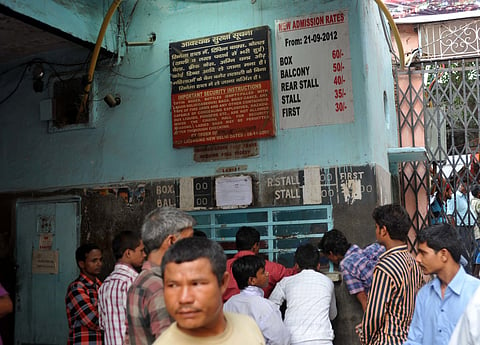Remembrance of things future
(This is an essay from our print quarterly 'Under the Shadow of the Bollywood Tree'. See more from the issue here.)
The BMW boys and their Gucci girlfriends don't go to Moti Cinema, but it wasn't always like this. There was a time when the Old Delhi elite – men in impeccably tailored suits and sherwanis, and women in brocade saris – queued up outside its ticket counters in Chandi Chowk for over 50 weeks to watch Raj Kapoor's Sangam (1964). But then, sometime in the 1980s when soaps and television serials first seduced India, and when video piracy lured the middle class away from theatres, Moti fell on hard times. When the multiplexes arrived in the 1990s, the cinema hall was on the wrong side of history. Like so many other single-screens in Delhi, it was headed for curtains.
Then in 2004, a cinema hall employee came up with a strange suggestion, recalls Moti's co-owner Kirit Desai. "Sir, we must screen Sasura Bada Paisewala. It's a Bhojpuri film running to packed houses in Benaras," he said. Desai, whose family had taken the theatre on lease 75 years ago, was barely aware of Bhojpuri cinema. Several decades back he had heard of Ganga Maiya Tohe Piyari Chadhaibo (1962), the first Bhojpuri film, which was released in the nearby Golcha cinema and had attracted the nation's top politicos, including future Prime Minister Lal Bahadur Shastri. But he wasn't sure if there were any prospective takers for Bhojpuri films in the Walled City. "Don't you know, sir," the employee continued almost admonishingly, "the bylanes here are full of coolies and other daily wage workers from Bihar and Uttar Pradesh. They will love watching a movie in their own language."

